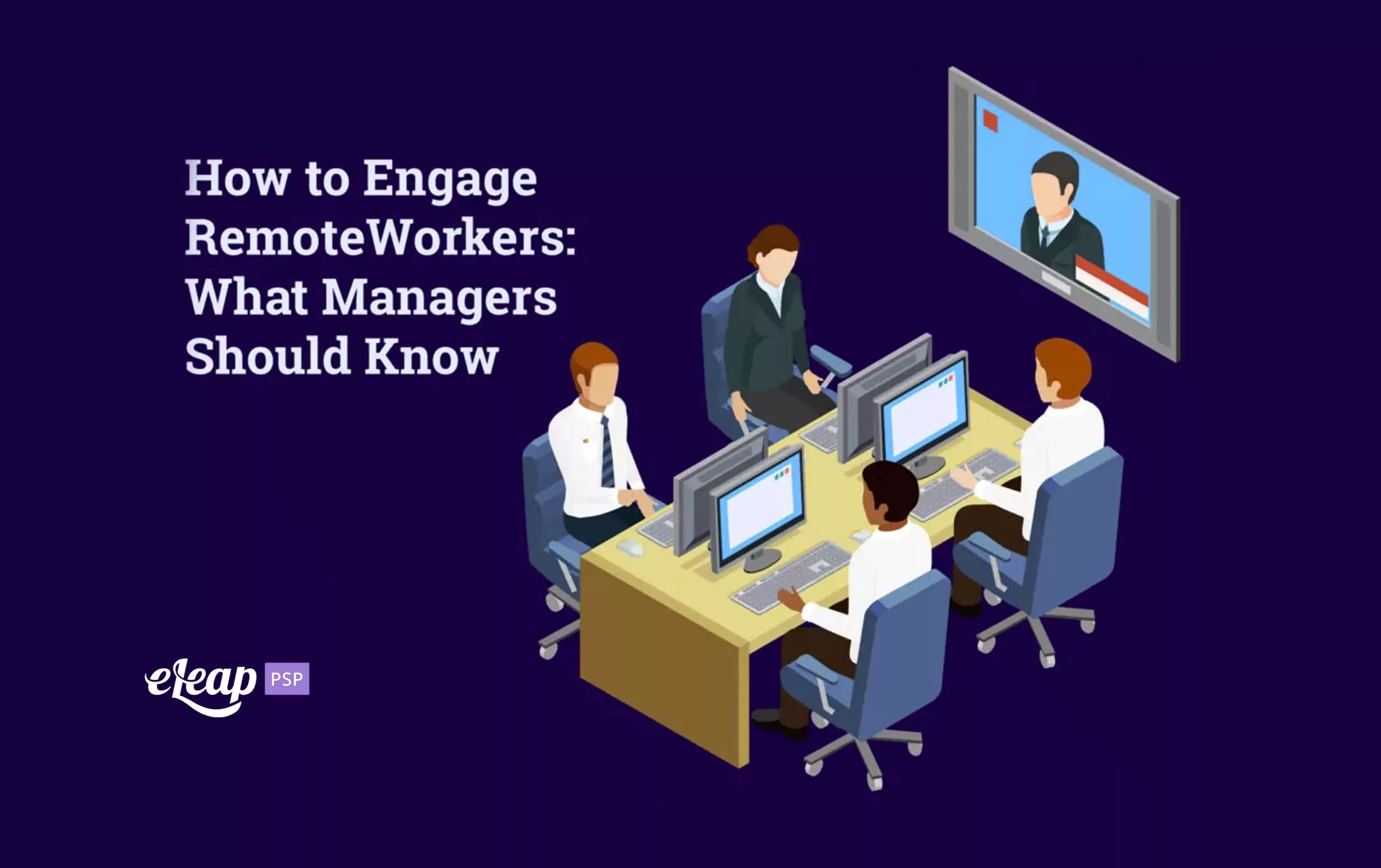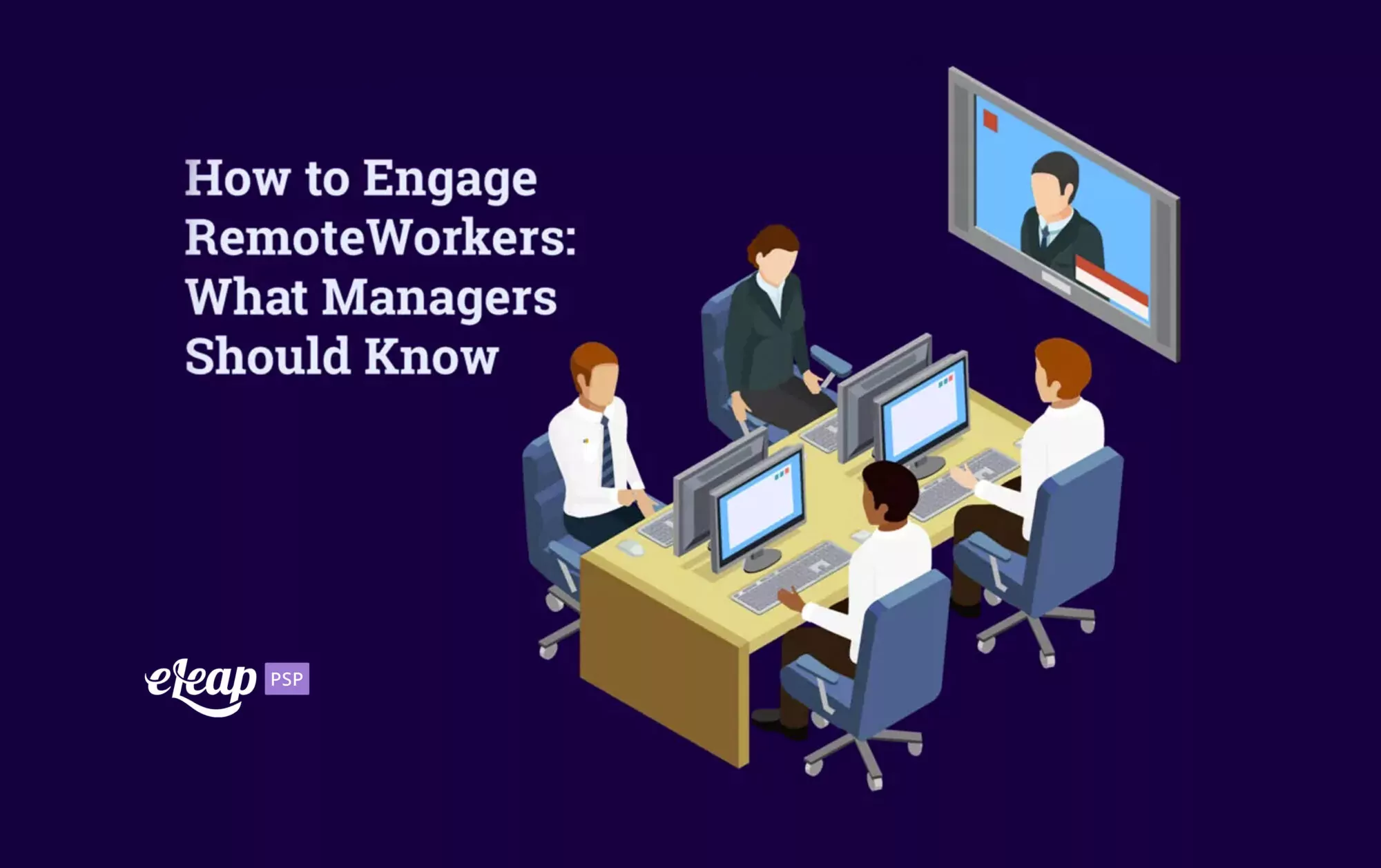How to Engage Remote Workers: What Managers Should Know

COVID-19 has ushered in a strange new world. Workers now do their jobs from home. Managers handle their responsibilities remotely. Most of your firm is probably spread out across a city, a state, or even an entire country.
In addition to the seismic shift that represents for how we handle regular business activities, it also poses some serious issues for workplace relationships. One of the most critical to handle correctly (and immediately) is engagement. If left unaddressed, remote work can lead to disengaged employees, a lack of communication, and even loss of key talent as your people seek out more fulfilling roles elsewhere.
Add to that the fact that even when COVID-19 is tamed, remote work is here to stay. More and more people are interested in working remotely. Businesses are increasingly realizing the substantial benefits that can be gained with a remote workforce, as well. That makes it incredibly important for managers to understand how to engage remote workers.
The good news is that it doesn’t have to be as challenging as you might think. There are simple yet effective ways to boost engagement, even with a globally-distributed workforce.
 /objectcontainer]
/objectcontainer]
Create a Sense of Belonging
The first and arguably most important thing for managers to do is imbue employees with a sense of belonging. They need to feel that they’re integral parts of the team, that they have a place there. Without a sense of belonging, your workers feel disengaged, unwanted, unnecessary, and they’ll seek out a solution, even if that means jumping ship and finding employment somewhere else.
Clearly Delineated Goals
Remote workers are often more productive and can complete tasks in much less time than it takes in-house employees. However, that creates a challenge – what do they do when their tasks are finished? How do they continue their momentum? The answer is to set clear, measurable goals and to delineate duties and responsibilities in a way that leaves no ambiguity.
Communicate, Communicate, Communicate
In a remote work situation, many of the communication methods we’re used to are impossible. You cannot simply pop in to ask a question, or catch up with someone at lunch. However, communication is even more critical to business success than ever before, so you must establish communication methods and a plan to keep everyone in the loop at all times. In fact, you’ll need to communicate much more frequently than you would in a traditional work situation. Consider using:
- In-person, virtual team meetings
- In-person, virtual company-wide meetings
- In-person, virtual coworker meetings
In addition to the video meetings, you’ll also need to use other communication tools. Email is certainly handy, but chat and messenger programs can offer an informal way for coworkers and team members to stay connected and on track, too.
With that being said, make sure that you’re not over-communicating. It’s a fine line to walk, but too much of a good thing is still too much.
Check In Frequently
Frequent check-ins are important for boosting remote worker engagement. These check-ins should be informal and shouldn’t look like performance management in action. Instead, they need to be person-focused. What does that mean? Take time to ask:
- How the employee is doing
- What are they struggling with currently
- What could you do to help the situation
These check-ins should become a combination of personal interaction and performance management. It’s the only way to ensure that you’re catching problems before they become real issues.
Make It Simple to Access Information
In the past, information was collected in silos within organizations. The marketing department owned its information. Sales owned its data. HR owned its information, and so on.
The problem here is that silos make it difficult or even impossible for employees to access the information they need to do their jobs. In a traditional workplace situation, that’s frustrating, but in a remote work scenario, it leads to disengagement, frustration, plummeting productivity rates, and other major challenges.
The answer? Make it simple for employees to access data. Let information flow freely throughout the organization. Of course, you still need to have safeguards in place to protect sensitive information, such as customer financial data and the like.
Empower Remote Workers
All employees want some degree of empowerment and autonomy. That applies even more to remote workers. They deserve to be heard, to have a say in decisions.
Empowered employees are much more engaged. They’re much more invested in the company and its success. They feel a much stronger sense of belonging and even ownership where the business is concerned. However, employees who don’t feel empowered have much lower levels of engagement and often feel powerless, with little sense of ownership or belonging.
Encourage Feedback
Workers are much more engaged when they feel that managers value what they have to say. If you are open to feedback from remote employees, they’ll not only feel a deeper sense of engagement, but they will provide important information that bolsters team performance and company success.
What sort of feedback? The first is peer-to-peer feedback, which allows remote workers to help manage each other’s’ performance. The second is manager feedback, which allows remote workers to provide you with insight into your performance.
Find Ways to Gamify Teamwork
Gamification has shown major improvements in a wide range of things, such as training and development. It can also play a significant role in improving your remote worker engagement. Gamifying teamwork brings an element of fun and competition while helping each individual to feel that they are part of something larger than themselves. Reward everyday activities, create leaderboards and find other ways to build engagement.
Management Is the Key
Finally, understand that managers are the key to remote employee engagement. Simply being aware that engagement is important and that remote work creates a more challenging situation can be enough to spur forward momentum. Keep an open mind, focus on creating strong relationships with remote workers, and ensure that they feel connected and that they belong, and you’ll be ahead of the game.